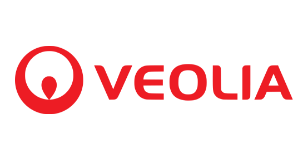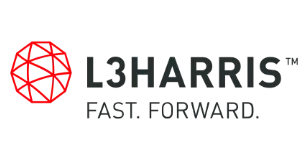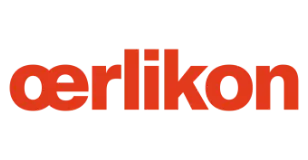
Global Food Safety Testing Market Research Report: Forecast (2025-2030)
Food Safety Testing Market Size, Share and Industry Analysis By Testing Type (Allergen Testing, Residues and Contamination Testing, GMO Testing, Mycotoxin (Fungi) and Microbiologic...al Testing, Pathogen Testing, Toxic Heavy Metals Testing, and Others (Chemical or Nutritional Testing)), By Technology (Traditional Technology, Rapid Technology [Molecular Detection System (MDS), Rapid pathogen testing technology, Rapid Antibody-based Technology]), By Application (Food [Dairy Products, Fruits & Vegetables, Seafood, Meat, and Poultry, Processed Food, Cereals & Grains, Others (Nuts and seeds)], Beverages [Water, Alcoholic Drinks, Milk Adulteration]), and others Read more
- Food & Beverages
- Jul 2025
- Pages 246
- Report Format: PDF, Excel, PPT
Market Definition
Food safety testing involves the use of scientific methods and equipment to ensure food products meet quality standards and are safe to consume. Food samples are tested for harmful substances and nutritional accuracy through microbiological, chemical, and other forms of testing. With the changing political, sociocultural, and technological environment, food safety testing is gaining increasing traction in recent years.
Market Insights and Analysis: Global Food Safety Testing Market (2025-30):
The Global Food Safety Testing Market size was valued at around USD 25.47 billion in 2024 and is projected to reach USD 34.19 billion by 2030. Along with this, the market is estimated to grow at a CAGR of around 5.03% during the forecast period, i.e., 2025-30. This market growth is primarily driven by stricter regulations, the prevalence of foodborne diseases, and growing consumer awareness. The market is currently experiencing rising demand due to the tightening of food safety standards by governments and regulatory agencies around the world. Lawmakers are not only responding to acts of food safety violations but are now focusing on the prevention of those events altogether. Stricter food safety regulations are being rolled out all over the globe, especially in developing countries where regulatory frameworks are still developing. One recent example of this is the Food Safety and Standards Authority of India (FSSAI) sending advisory notices to food and beverage companies throughout the country to stop using misleading statements on their product labels.
| Report Coverage | Details |
|---|---|
| Historical Years | 2020–23 |
| Base Years | 2024 |
| Forecast Years | 2025–30 |
| Market Value in 2024 | USD 25.47 Billion |
| Market Value by 2030 | USD 34.19 Billion |
| CAGR (2025–30) | 5.03% |
| Leading Region | North America |
| Top Key Players | The 3M Company, Agilent Technologies, ALS, BioMérieux SA, Bio-Rad Laboratories, Bureau Veritas, Eurofins Scientific, Genetic ID NA Inc., Intertek Group, Merck Group, Merieux NutriSciences, Neogen Corporation, Qiagen Corporation, SGS S.A., and others |
| Segmentation | By Testing Type (Allergen Testing, Residues and Contamination Testing, GMO Testing, Mycotoxin (Fungi) and Microbiological Testing, Pathogen Testing, Toxic Heavy Metals Testing, and Others (Chemical or Nutritional Testing)), By Technology (Traditional Technology, Rapid Technology [Molecular Detection System (MDS), Rapid pathogen testing technology, Rapid Antibody-based Technology]), By Application (Food [Dairy Products, Fruits & Vegetables, Seafood, Meat, and Poultry, Processed Food, Cereals & Grains, Others (Nuts and seeds)], Beverages [Water, Alcoholic Drinks, Milk Adulteration]), and others |
| Key Report Highlights |
|
*Boost strategic growth with in-depth market analysis - Get a free sample preview today!
Additionally, the sheer occurrence of foodborne diseases from bacteria, fungi, toxins, and other contaminants is yet another factor driving the increased attention being given to food safety testing. The World Health Organization (WHO) reports that foodborne illnesses afflict more than 600 million people across the globe each year. With far-reaching implications on consumers and service providers for food safety testing, this accelerated emphasis on food safety increases the demand for testing, especially in low and middle-income countries that are largely affected by foodborne illnesses.
Moreover, consumers are growing more aware of food safety through increasing access to information. This is leading to increased demand for food safety testing across the globe, as consumers are demanding ‘clean-label’, ‘GMO-free’, and other varieties of verified food safety certifications. This is driving manufacturers and distributors in the packaged food industry to increasingly adopt food safety practices, driving market demand for food safety testing.
Global Food Safety Testing Market Driver:
Regulatory & Compliance Requirements – Food safety regulations are driving the market demand for food safety testing by having a binding effect on food manufacturers and distributors. Food safety testing is legally mandated in most countries, with significant penalties for non-compliance with regulatory standards. This is forcing food safety testing companies to invest significantly in testing practices to avoid any occurrence of regulatory violations by either developing in-house capabilities or outsourcing it to testing laboratories, depending upon the scale of their operations and availability of testing facilities. Even the slightest oversight in testing can cause millions of dollars in losses through product recalls, market bans, and reputational damage, even without legal penalties being imposed by regulators, driving the demand for food safety testing.
The effect of these requirements becomes even more pronounced in the context of global trade, as international standards are generally more rigorous. Food items undergo safety testing on multiple levels before they can be exported to international markets. Even distributors enforce their own standards on exporters to minimize the risk of food safety violations by restricting the import of substandard products, driving further market demand for food safety testing.
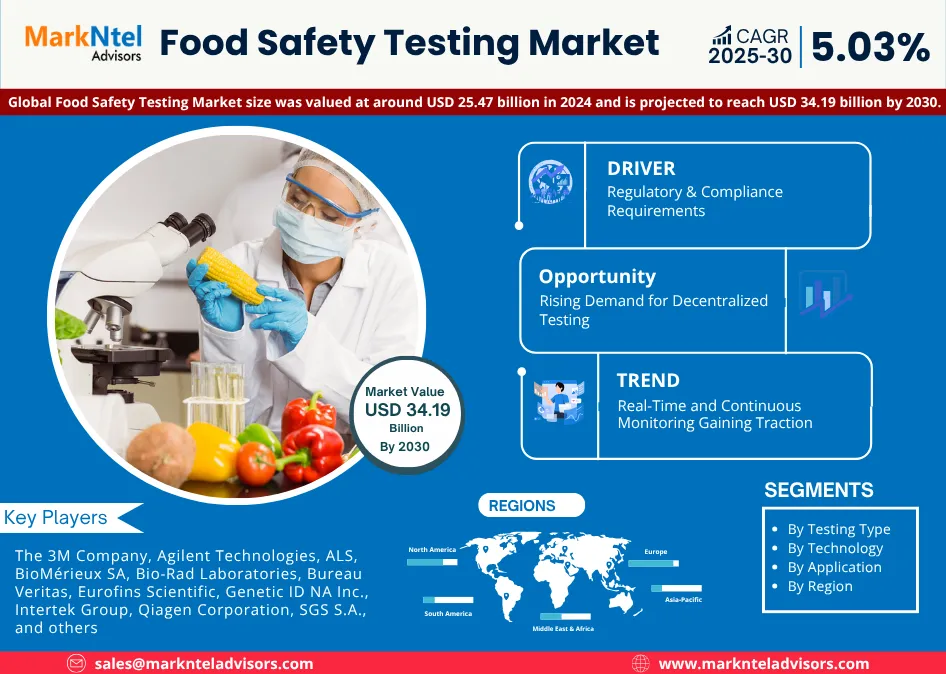
Global Food Safety Testing Market Opportunity:
Rising Demand for Decentralized Testing – There has been an increased realization about the limitations of centralized lab-based testing. These facilities often take days to produce results, and can be costly too. Moreover, they are usually located in bigger cities and are inaccessible to businesses located in remote areas. On-spot testing solutions offer the convenience of doing routine checks on a regular basis. Furthermore, on-spot testing allows the detection of potential contaminations at an early stage and reduces the chance of product disposals and recalls, thereby saving money and time. For instance, the 3MTM Molecular Detection System can detect microbial contamination in meat within 24 hours, and is becoming popular with poultry and other businesses operating in the meat industry. Thus, decentralized testing opens an opportunity to cater to the needs of unserved and underserved market segments through portable testing solutions, which are customizable and can be scaled up or down based on testing requirements.
Global Food Safety Testing Market Challenge:
High Cost of Testing Infrastructure – Although alternative testing solutions are emerging, the majority of the food safety testing demand is still being served by traditional testing infrastructure. These facilities are often limited because of the high cost of setting them up, especially in countries with low proliferation of testing infrastructure. As a result, a large section of the food production market is unable to avail itself of testing services regularly. This is particularly the case for those countries where governments provide very little or limited support for the testing industry.
For instance, over half of the food consumed in sub-Saharan Africa remains untested as affordable testing facilities are not readily available. Furthermore, small and medium-scale food producers, who contribute 80% to global food production, are similarly discouraged from regular testing. Moreover, this is also affecting technological advancements in the food safety testing market. Modern technologies are not being widely adopted due to a lack of testing facilities and skilled operators. Thus, the high cost of testing infrastructure is likely to remain a challenge for the Global Food Safety Testing Market.
Global Food Safety Testing Market Trend:
Real-Time and Continuous Monitoring Gaining Traction – This trend is shifting the focus of food testing from a reactive approach to a proactive approach. While traditional testing often takes place after food is produced, real-time and continuous monitoring allows the detection of contamination and other lapses in food safety while the food is being produced. This saves a significant amount of time and money wasted in traditional testing procedures.
Real-time testing uses connected devices and cloud-based systems that are modular by design. This makes these systems highly scalable as hardware and software components can be added as per requirements. This provides increased flexibility to users in terms of both acquisition costs and operational requirements. Additionally, these systems allow continuous inventory and logistics management in food supply chains. This is exemplified in retailers like Walmart are using real-time systems to ensure food safety on the go. Thus, this trend is likely to shape the Food Safety Testing Market as the industry becomes more digital and interconnected
Global Food Safety Testing Market (2025-2030): Segmentation Analysis
The Global Food Safety Testing Market study of MarkNtel Advisors evaluates & highlights the major trends and influencing factors in each segment. It includes predictions for the period 2025-2030 at the global level. Based on the analysis, the market has been further classified as:
Based on Testing Type:
- Allergen Testing
- Residues & Contamination Testing
- GMO Testing
- Mycotoxin (Fungi) & Microbiological Testing
- Pathogen Testing
- Toxic Heavy Metals Testing
- Others (Chemical or Nutritional Testing)
Pathogen testing is the dominant segment based on testing type, with an estimated market share of about 35-40% across the globe. It involves testing food products for harmful microorganisms that cause various foodborne diseases. As a result, regulatory agencies around the world have made pathogen testing necessary for high-risk food categories, leading to market dominance of this segment.
Moreover, there is an increased demand for pathogen testing because it is more frequently required than other types of testing. Pathogen testing is carried out through multiple stages of the food production value chain, unlike other segments in this category. Additionally, modern testing technologies are more widely used in pathogen testing, which is leading to increased accuracy and faster outputs. Thus, pathogen testing is likely to remain the dominant segment in the global food safety testing market during the forecast period.
Based on Application:
- Food
- Dairy Products
- Fruits and Vegetables
- Seafood, Meat, and Poultry
- Processed Food
- Cereals and Grains
- Others (Nuts and Seeds)
- Beverages
- Water
- Alcoholic Drinks
- Milk Adulteration
Food testing is the dominant segment based on application, with an estimated market share of around 85%. The food segment consists of a wider variety of product categories with specific testing requirements due to increased complexity and perishability as compared to beverages. These products are popular and are more widely distributed, increasing the risk of contamination, which further increases testing requirements for this segment.
Seafood, meat, and poultry form the biggest sub-segment, estimated to account for 25-30% of the demand for food safety testing within the food segment. This sub-segment is a high-risk food category because of its animal origin and high moisture content, along with an increased sensitivity to cold-chain maintenance. This segment is more strictly regulated when it comes to food safety, especially in countries like the US, China, Germany, Brazil, and India, which account for the majority of its increasing consumption and trade. Thus, these aspects are likely to contribute to the sustained dominance of this segment in the coming years.
Global Food Safety Testing Market (2025-30): Regional Projections
Geographically, the Global Food Safety Testing Market expands across:
- North America
- South America
- Europe
- Middle East and Africa
- Asia-Pacific
North America is the dominant region with a market share of more than 30%. This leading position is driven by stricter regulations, advanced testing infrastructure, increased adoption of modern testing technologies, and high consumption of imported and high-risk food products. Prominent regulators in the region have implemented strict protocols for preventive control, environmental monitoring, residue limits, and frequent testing for broad-spectrum contaminants, especially for high-risk product categories. Additionally, the US and Canada have advanced testing facilities spread across the countries, which enable compliance with food safety regulations and drive market demand.
Moreover, this region has a high adoption rate of technology, which enables product traceability, continuous monitoring, decentralized testing, and other modern food safety testing practices. Further supported by increased testing requirements due to a strong demand for high-risk and imported food categories, North America is likely to continue to dominate the global food safety testing industry in the coming years.
Global Food Safety Testing Industry Recent Development:
- October 2024: Mérieux NutriSciences completed the acquisition of the food testing business of Bureau Veritas, consolidating its position in the global food safety testing industry.
- May 2024: Agilent Technologies entered into a strategic collaboration with the Indian Council of Agricultural Research (ICAR) to develop advanced analytical workflows, bridging gaps in food safety regulations in emerging markets.
Gain a Competitive Edge with Our Global Food Safety Testing Market Report
- Global Food Safety Testing Market Report by MarkNtel Advisors provides a detailed & thorough analysis of market size & share, growth rate, competitive landscape, and key players. This comprehensive analysis helps businesses gain a holistic understanding of the market dynamics & make informed decisions.
- This report also highlights current market trends & future projections, allowing businesses to identify emerging opportunities & potential challenges. By understanding market forecasts, companies can align their strategies & stay ahead of the competition.
- Global Food Safety Testing Market Report aids in assessing & mitigating risks associated with entering or operating in the market. By understanding market dynamics, regulatory frameworks, and potential challenges, businesses can develop strategies to minimize risks & optimize their operations.
*Reports Delivery Format - Market research studies from MarkNtel Advisors are offered in PDF, Excel and PowerPoint formats. Within 24 hours of the payment being successfully received, the report will be sent to your email address.
Frequently Asked Questions
- Market Segmentation
- Introduction
- Product Definition
- Research Process
- Assumptions
- Executive Summary
- Global Food Safety Testing Market Regulations & Policy
- Global Food Safety Testing Market Trends & Insights
- Global Food Safety Testing Market Value Chain Analysis
- Global Food Safety Testing Market Dynamics
- Drivers
- Challenges
- Technological Advancements in the Global Food Safety Testing Market
- Global Food Safety Testing Market Hotspots & Opportunities
- Global Food Safety Testing Market Outlook, 2020-2030F
- Market Size & Analysis
- By Revenues (USD Million)
- Market Share & Analysis
- By Testing Type
- Allergen Testing- Market Size & Forecast 2020-2030, USD Million
- Residues and Contamination Testing- Market Size & Forecast 2020-2030, USD Million
- GMO Testing- Market Size & Forecast 2020-2030, USD Million
- Mycotoxin (Fungi) and Microbiological Testing- Market Size & Forecast 2020-2030, USD Million
- Pathogen Testing- Market Size & Forecast 2020-2030, USD Million
- Toxic Heavy Metals Testing- Market Size & Forecast 2020-2030, USD Million
- Others (Chemical or Nutritional Testing) - Market Size & Forecast 2020-2030, USD Million
- By Technology
- Traditional Technology- Market Size & Forecast 2020-2030, USD Million
- Rapid Technology - Market Size & Forecast 2020-2030, USD Million
- Molecular Detection System (MDS) - Market Size & Forecast 2020-2030, USD Million
- Rapid pathogen testing technology- Market Size & Forecast 2020-2030, USD Million
- Rapid Antibody-based Technology- Market Size & Forecast 2020-2030, USD Million
- By Application
- Food- Market Size & Forecast 2020-2030, USD Million
- Dairy Products- Market Size & Forecast 2020-2030, USD Million
- Fruits & Vegetables- Market Size & Forecast 2020-2030, USD Million
- Seafood, Meat, and Poultry- Market Size & Forecast 2020-2030, USD Million
- Processed Food- Market Size & Forecast 2020-2030, USD Million
- Cereals & Grains- Market Size & Forecast 2020-2030, USD Million
- Others (Nuts and seeds) - Market Size & Forecast 2020-2030, USD Million
- Beverages- Market Size & Forecast 2020-2030, USD Million
- Water- Market Size & Forecast 2020-2030, USD Million
- Alcoholic Drinks- Market Size & Forecast 2020-2030, USD Million
- Milk Adulteration- Market Size & Forecast 2020-2030, USD Million
- Food- Market Size & Forecast 2020-2030, USD Million
- By Region
- North America
- South America
- Europe
- Asia Pacific
- Middle East and Africa
- By Competitors
- Competition Characteristics
- Market Share & Analysis
- By Testing Type
- Market Size & Analysis
- North America Food Safety Testing Market Outlook, 2020-2030F
- Market Size & Analysis
- By Revenues (USD Million)
- Market Share & Analysis
- By Testing Type- Market Size & Forecast 2020-2030, USD Million
- By Application- Market Size & Forecast 2020-2030, USD Million
- By Technology- Market Size & Forecast 2020-2030, USD Million
- By Country
- The U.S.
- Canada
- Mexico
- The U.S. Food Safety Testing Market Outlook, 2020-2030F
- Market Size & Analysis
- By Revenues (USD Million)
- Market Share & Analysis
- By Testing Type- Market Size & Forecast 2020-2030, USD Million
- Market Size & Analysis
- Canada Food Safety Testing Market Outlook, 2020-2030F
- Market Size & Analysis
- By Revenues (USD Million)
- Market Share & Analysis
- By Testing Type- Market Size & Forecast 2020-2030, USD Million
- Market Size & Analysis
- Mexico Food Safety Testing Market Outlook, 2020-2030F
- Market Size & Analysis
- By Revenues (USD Million)
- Market Share & Analysis
- By Testing Type- Market Size & Forecast 2020-2030, USD Million
- Market Size & Analysis
- Market Size & Analysis
- South America Food Safety Testing Market Outlook, 2020-2030F
- Market Size & Analysis
- By Revenues (USD Million)
- Market Share & Analysis
- By Testing Type- Market Size & Forecast 2020-2030, USD Million
- By Application- Market Size & Forecast 2020-2030, USD Million
- By Technology- Market Size & Forecast 2020-2030, USD Million
- By Country
- Brazil
- Rest of South America
- Brazil Food Safety Testing Market Outlook, 2020-2030F
- Market Size & Analysis
- By Revenues (USD Million)
- Market Share & Analysis
- By Testing Type- Market Size & Forecast 2020-2030, USD Million
- Market Size & Analysis
- Market Size & Analysis
- Europe Food Safety Testing Market Outlook, 2020-2030F
- Market Size & Analysis
- By Revenues (USD Million)
- Market Share & Analysis
- By Testing Type- Market Size & Forecast 2020-2030, USD Million
- By Application- Market Size & Forecast 2020-2030, USD Million
- By Technology- Market Size & Forecast 2020-2030, USD Million
- By Country
- The U.K.
- Germany
- France
- Italy
- Spain
- Rest of Europe
- The U.K. Food Safety Testing Market Outlook, 2020-2030F
- Market Size & Analysis
- By Revenues (USD Million)
- Market Share & Analysis
- By Testing Type- Market Size & Forecast 2020-2030, USD Million
- Market Size & Analysis
- Germany Food Safety Testing Market Outlook, 2020-2030F
- Market Size & Analysis
- By Revenues (USD Million)
- Market Share & Analysis
- By Testing Type- Market Size & Forecast 2020-2030, USD Million
- Market Size & Analysis
- France Food Safety Testing Market Outlook, 2020-2030F
- Market Size & Analysis
- By Revenues (USD Million)
- Market Share & Analysis
- By Testing Type- Market Size & Forecast 2020-2030, USD Million
- Market Size & Analysis
- Italy Food Safety Testing Market Outlook, 2020-2030F
- Market Size & Analysis
- By Revenues (USD Million)
- Market Share & Analysis
- By Testing Type- Market Size & Forecast 2020-2030, USD Million
- Market Size & Analysis
- Spain Food Safety Testing Market Outlook, 2020-2030F
- Market Size & Analysis
- By Revenues (USD Million)
- Market Share & Analysis
- By Testing Type- Market Size & Forecast 2020-2030, USD Million
- Market Size & Analysis
- Market Size & Analysis
- Asia Pacific Food Safety Testing Market Outlook, 2020-2030F
- Market Size & Analysis
- By Revenues (USD Million)
- Market Share & Analysis
- By Testing Type- Market Size & Forecast 2020-2030, USD Million
- By Application- Market Size & Forecast 2020-2030, USD Million
- By Technology- Market Size & Forecast 2020-2030, USD Million
- By Country
- China
- India
- Japan
- South Korea
- Rest of Asia Pacific
- China Food Safety Testing Market Outlook, 2020-2030F
- Market Size & Analysis
- By Revenues (USD Million)
- Market Share & Analysis
- By Testing Type- Market Size & Forecast 2020-2030, USD Million
- Market Size & Analysis
- India Food Safety Testing Market Outlook, 2020-2030F
- Market Size & Analysis
- By Revenues (USD Million)
- Market Share & Analysis
- By Testing Type- Market Size & Forecast 2020-2030, USD Million
- Market Size & Analysis
- Japan Food Safety Testing Market Outlook, 2020-2030F
- Market Size & Analysis
- By Revenues (USD Million)
- Market Share & Analysis
- By Testing Type- Market Size & Forecast 2020-2030, USD Million
- Market Size & Analysis
- South Korea Food Safety Testing Market Outlook, 2020-2030F
- Market Size & Analysis
- By Revenues (USD Million)
- Market Share & Analysis
- By Testing Type- Market Size & Forecast 2020-2030, USD Million
- Market Size & Analysis
- Market Size & Analysis
- Middle East and Africa Food Safety Testing Market Outlook, 2020-2030F
- Market Size & Analysis
- By Revenues (USD Million)
- Market Share & Analysis
- By Testing Type- Market Size & Forecast 2020-2030, USD Million
- By Application- Market Size & Forecast 2020-2030, USD Million
- By Technology- Market Size & Forecast 2020-2030, USD Million
- By Country
- UAE
- Saudi Arabia
- South Africa
- Rest of the Middle East and Africa
- UAE Food Safety Testing Market Outlook, 2020-2030F
- Market Size & Analysis
- By Revenues (USD Million)
- Market Share & Analysis
- By Testing Type- Market Size & Forecast 2020-2030, USD Million
- Market Size & Analysis
- Saudi Arabia Food Safety Testing Market Outlook, 2020-2030F
- Market Size & Analysis
- By Revenues (USD Million)
- Market Share & Analysis
- By Testing Type- Market Size & Forecast 2020-2030, USD Million
- Market Size & Analysis
- South Africa Food Safety Testing Market Outlook, 2020-2030F
- Market Size & Analysis
- By Revenues (USD Million)
- Market Share & Analysis
- By Testing Type- Market Size & Forecast 2020-2030, USD Million
- Market Size & Analysis
- Market Size & Analysis
- Global Food Safety Testing Market Key Strategic Imperatives for Success and Growth
- Competition Outlook (Whichever Applicable)
- Company Profiles
- The 3M Company
- Business Description
- Product Portfolio
- Strategic Alliances or Partnerships
- Recent Developments
- Financial Details
- Others
- Agilent Technologies
- Business Description
- Product Portfolio
- Strategic Alliances or Partnerships
- Recent Developments
- Financial Details
- Others
- ALS
- Business Description
- Product Portfolio
- Strategic Alliances or Partnerships
- Recent Developments
- Financial Details
- Others
- Bio-merieux SA
- Business Description
- Product Portfolio
- Strategic Alliances or Partnerships
- Recent Developments
- Financial Details
- Others
- Bio-Rad Laboratories
- Business Description
- Product Portfolio
- Strategic Alliances or Partnerships
- Recent Developments
- Financial Details
- Others
- Bureau Veritas
- Business Description
- Product Portfolio
- Strategic Alliances or Partnerships
- Recent Developments
- Financial Details
- Others
- Eurofins Scientific
- Business Description
- Product Portfolio
- Strategic Alliances or Partnerships
- Recent Developments
- Financial Details
- Others
- Genetic ID NA Inc
- Business Description
- Product Portfolio
- Strategic Alliances or Partnerships
- Recent Developments
- Financial Details
- Others
- Intertek Group
- Business Description
- Product Portfolio
- Strategic Alliances or Partnerships
- Recent Developments
- Financial Details
- Others
- Merck Group
- Business Description
- Product Portfolio
- Strategic Alliances or Partnerships
- Recent Developments
- Financial Details
- Others
- Merieux NutriSciences
- Business Description
- Product Portfolio
- Strategic Alliances or Partnerships
- Recent Developments
- Financial Details
- Others
- Neogen Corporation
- Business Description
- Product Portfolio
- Strategic Alliances or Partnerships
- Recent Developments
- Financial Details
- Others
- Qiagen Corporation
- Business Description
- Product Portfolio
- Strategic Alliances or Partnerships
- Recent Developments
- Financial Details
- Others
- SGS S.A.
- Business Description
- Product Portfolio
- Strategic Alliances or Partnerships
- Recent Developments
- Financial Details
- Others
- Others
- Business Description
- Product Portfolio
- Strategic Alliances or Partnerships
- Recent Developments
- Financial Details
- Others
- The 3M Company
- Company Profiles
- Disclaimer
MarkNtel Advisors follows a robust and iterative research methodology designed to ensure maximum accuracy and minimize deviation in market estimates and forecasts. Our approach combines both bottom-up and top-down techniques to effectively segment and quantify various aspects of the market. A consistent feature across all our research reports is data triangulation, which examines the market from three distinct perspectives to validate findings. Key components of our research process include:
1. Scope & Research Design At the outset, MarkNtel Advisors define the research objectives and formulate pertinent questions. This phase involves determining the type of research—qualitative or quantitative—and designing a methodology that outlines data collection methods, target demographics, and analytical tools. They also establish timelines and budgets to ensure the research aligns with client goals.
2. Sample Selection and Data Collection In this stage, the firm identifies the target audience and determines the appropriate sample size to ensure representativeness. They employ various sampling methods, such as random or stratified sampling, based on the research objectives. Data collection is carried out using tools like surveys, interviews, and observations, ensuring the gathered data is reliable and relevant.
3. Data Analysis and Validation Once data is collected, MarkNtel Advisors undertake a rigorous analysis process. This includes cleaning the data to remove inconsistencies, employing statistical software for quantitative analysis, and thematic analysis for qualitative data. Validation steps are taken to ensure the accuracy and reliability of the findings, minimizing biases and errors.
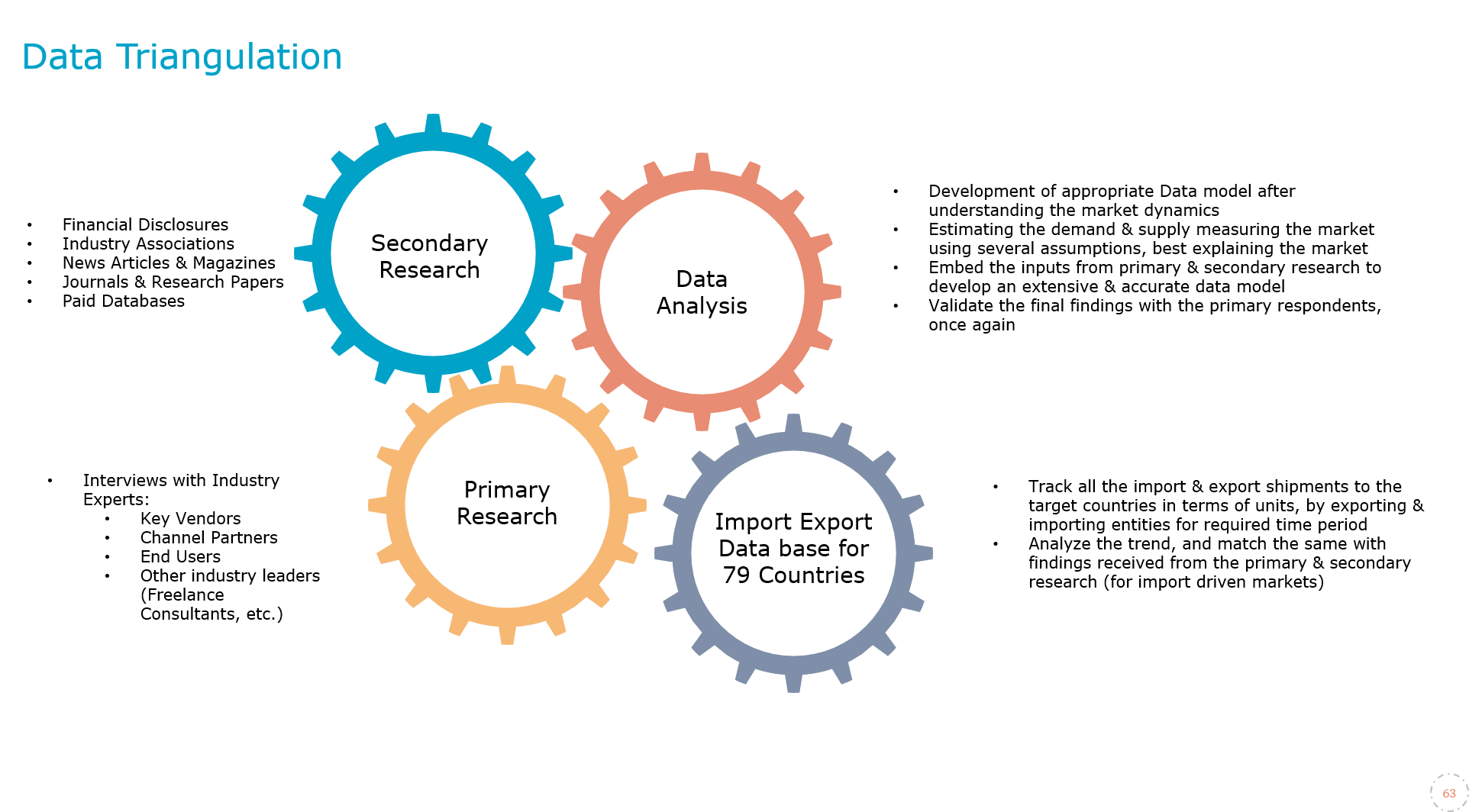
4. Data Forecast and FinalizationThe final phase involves forecasting future market trends based on the analyzed data. MarkNtel Advisors utilize predictive modeling and time series analysis to anticipate market behaviors. The insights are then compiled into comprehensive reports, featuring visual aids like charts and graphs, and include strategic recommendations to inform client decision-making

